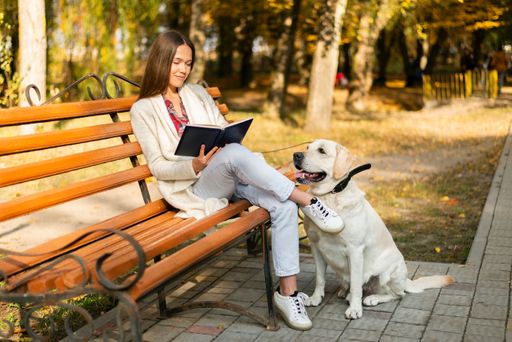Numerous studies have shown that dogs are a great ally for children with autism. A 2016 Texas Tech University study showed, for instance, that using canines as a reward for completed tasks could be very motivational for kids with ASD. With just an iPad or toy as a reward, researchers stated, children could become bored over time. With pets, however, the exact opposite situation occurs! Children become increasingly attached to the dog and the effects of the reward are increasingly profound.
Autism Assistance Dogs
Dogs can be trained to specifically aid children with autism. For instance, autism assistance dogs learn to track kids. This is useful because children with ASD can sometimes display wandering or impulsive behaviors. Dogs can therefore help parents find where a child may be playing. These dogs are also taught to tether (the dog wears a harness and is attached to the child so the dog serves as an anchor) and to redirect behaviors. When a child is having a meltdown or is experiencing sensory overload, for instance, a dog can be taught to place their paw gently on the child’s leg, apply deep pressure to soothe them, or even give kisses. Many kids find snuggling with a dog or having a dog lay their head on their lap, to be immensely calming.
Helping with Transitions
One area that dogs can be particularly helpful in, is that of transitions. Imagine you are working on a science topic with your child. If you are carrying out an experiment to teach your child to understand the scientific method, you may have to provide a different setup to what might be available in a usual class. For instance, teachers are usually advised to make scientific activities messy, colorful, and sometimes, a little loud (owing to electrical objects and other motivating tools). For a child with autism, you may find it beneficial to reduce noise and create an organized space, trying activities like making a solar-powered pin-wheel or playing sink and float. Your child may become enthralled with the activity and find it hard to transition to a totally different subject. A dog can help them grow more interested in physically moving to another area. After a small amount of play, you can introduce your child to the new activity.
Everyday Routines
Dogs can help everyday routines be easier for a child with ASD to follow. These routines can include sleeping at the same time every night (pets can sleep in the child’s room), interacting with others at the playground, and completing responsibilities such as brushing their teeth daily. A child can also learn the importance of taking care of their dog by brushing and feeding them, and by making sure their water bowl is always topped up.
Pets as a whole can benefit both children with autism and their families. Dogs bring a sense of calm and boost social interaction. They can help track a child who has wandered, ease transitions between activities, and make everyday tasks more pleasurable.



















